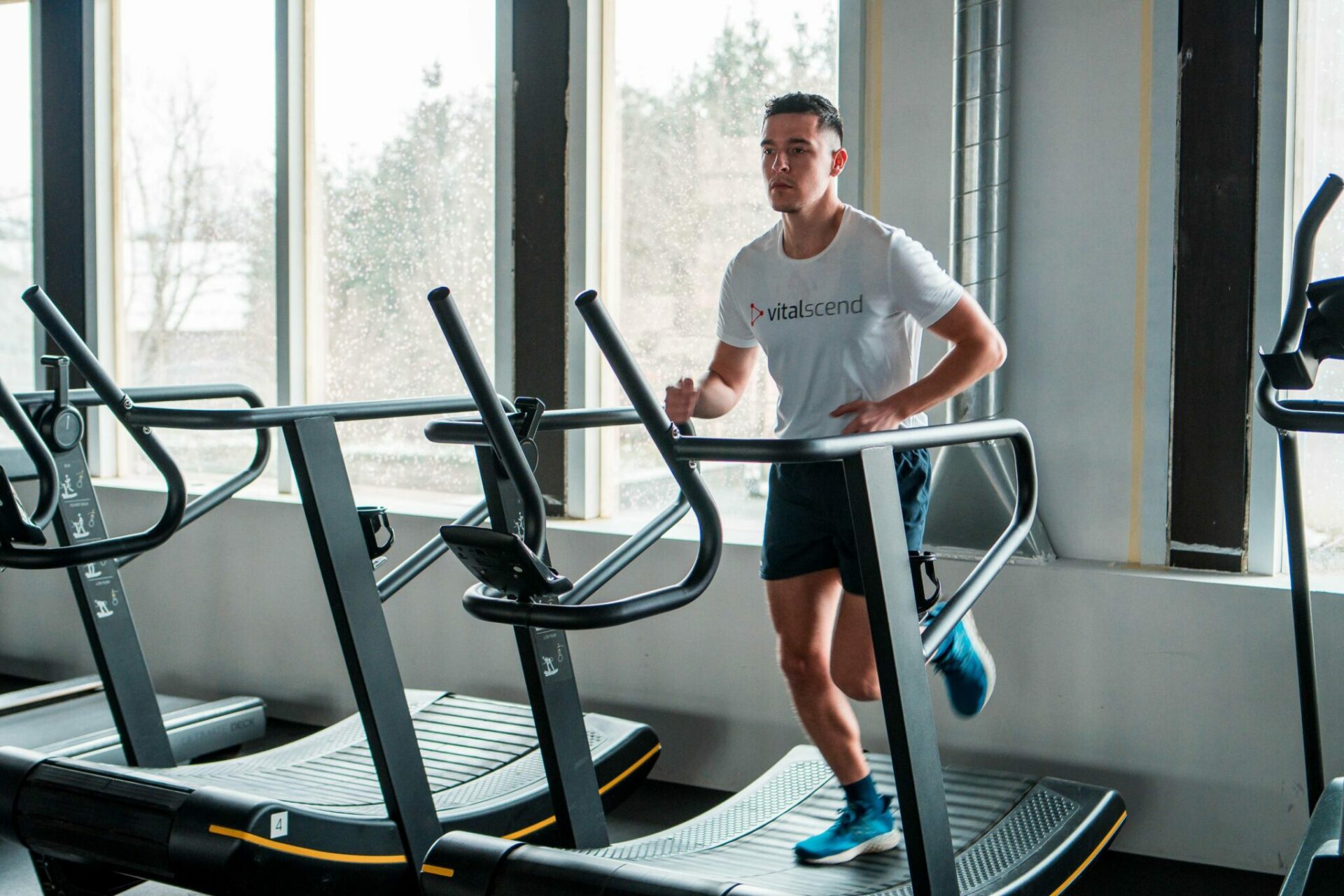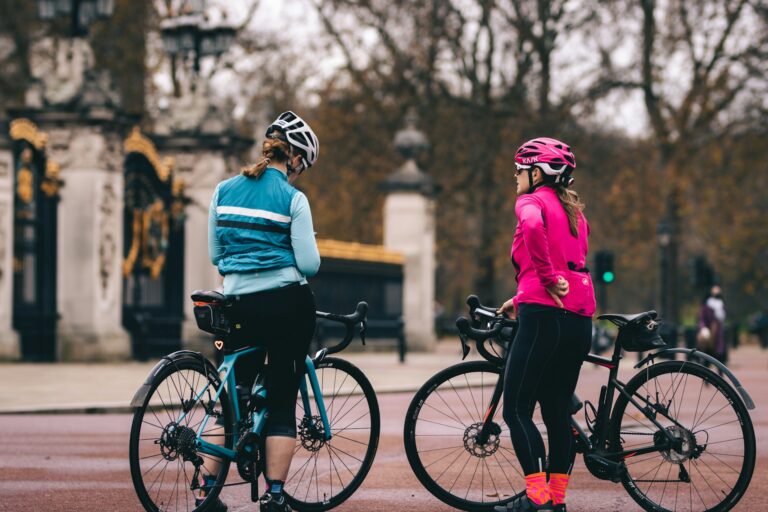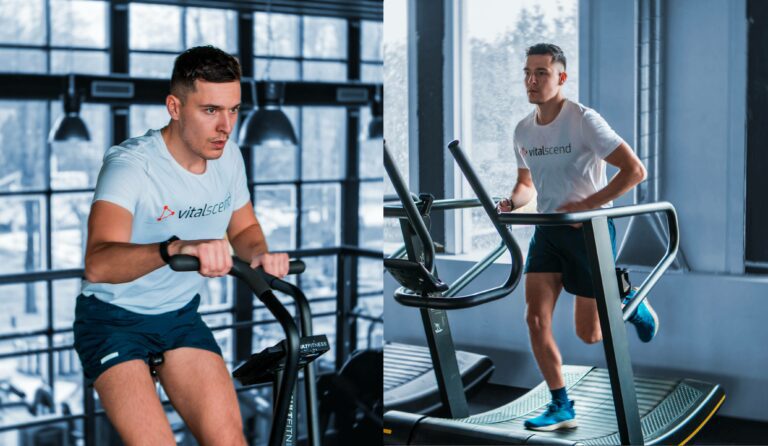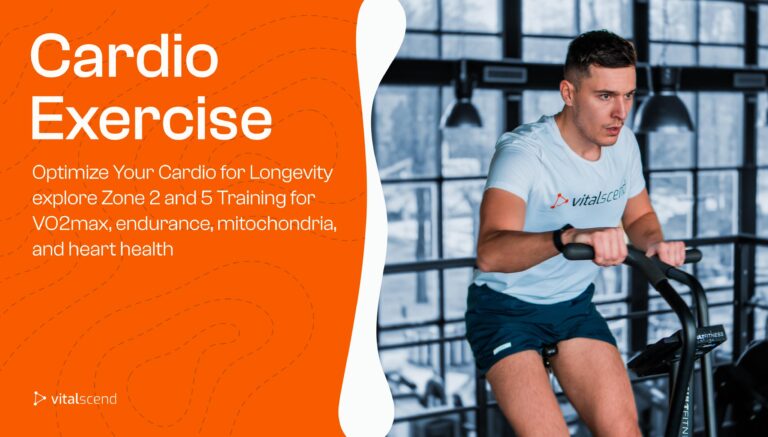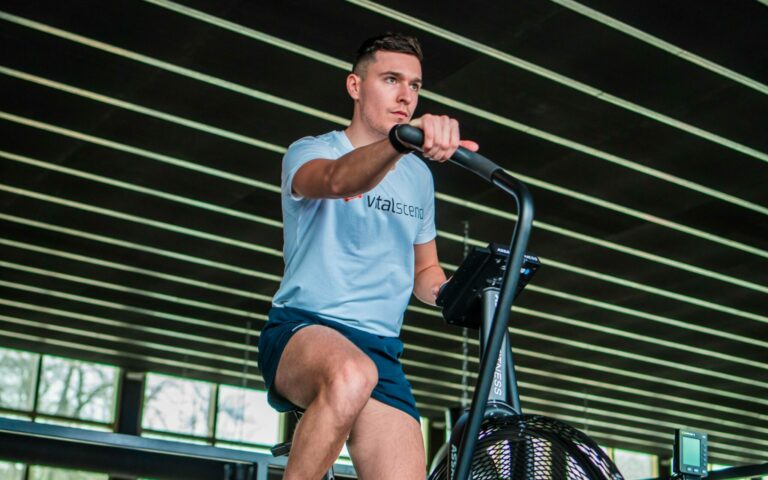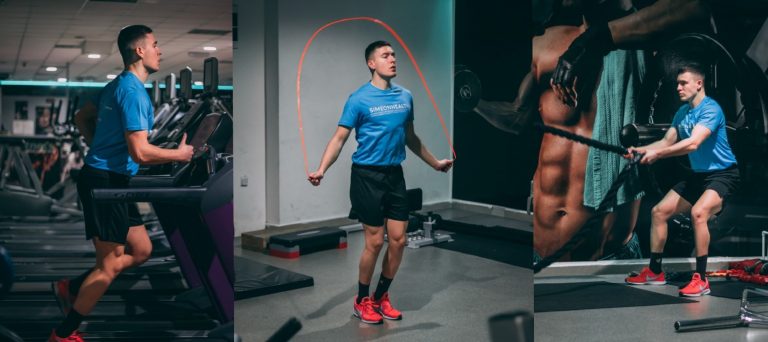7 Benefits of Low Intensity Cardio Exercise on Heart Health
There are numerous benefits of low intensity cardio that extend far beyond heart health. It’s the conditioning we need to be active and move more in life. Usually called steady-state cardio or zone 2 training, it does miracles for our bodies. Yap, from weight loss and energy boost to a stronger heart and healthier brain, you got it.
Zone 2: Steady State Cardio
As exercise intensity increases, the body demands more oxygen to produce energy. Our heart rate goes up and oxygen consumption follows. At some point, we’re unable to supply the need for energy only through (O2) the aerobic system. This is where we incorporate the anaerobic system, using fuels like glycogen, glucose, ATP, and creatine phosphate.
The lower the intensity, the slower the energy production. This burns more fat as fuel through a process called beta-oxidation. It happens during walking, light jogging, swimming, or hiking, which corresponds to a 60-75% of HRmax. It’s an intensity light enough so you can think and talk clearly, called the zone 2 training.
LISS – The Fundamental Type of Cardio
Zone 2 training is known as low-intensity or steady-state cardio. It makes up the bulk of marathon runners’ training. This builds a solid base for using the aerobic system as the race progresses, and we get slower.
Why is it so beneficial? It makes our bodies use oxygen better, improves aerobic capacity, recovery, and heart health. (1) (2)
But why is it so fundamental? See, you can increase your VO2max faster with high-interval intensity training, doing short bursts of sprints. But if you only do HIIT and no LISS, you’re missing a ton of benefits on a metabolic level. Why? Because it optimizes the machinery that produces energy, our precious mitochondria.
Fun Fact
Zone 2 is where life happens. It’s what allows you to move more and be active. It’s the fat-burning stage of cardio you need, hence why you see bodybuilders doing more steady walking or stairs than any sprints or similar HIIT.
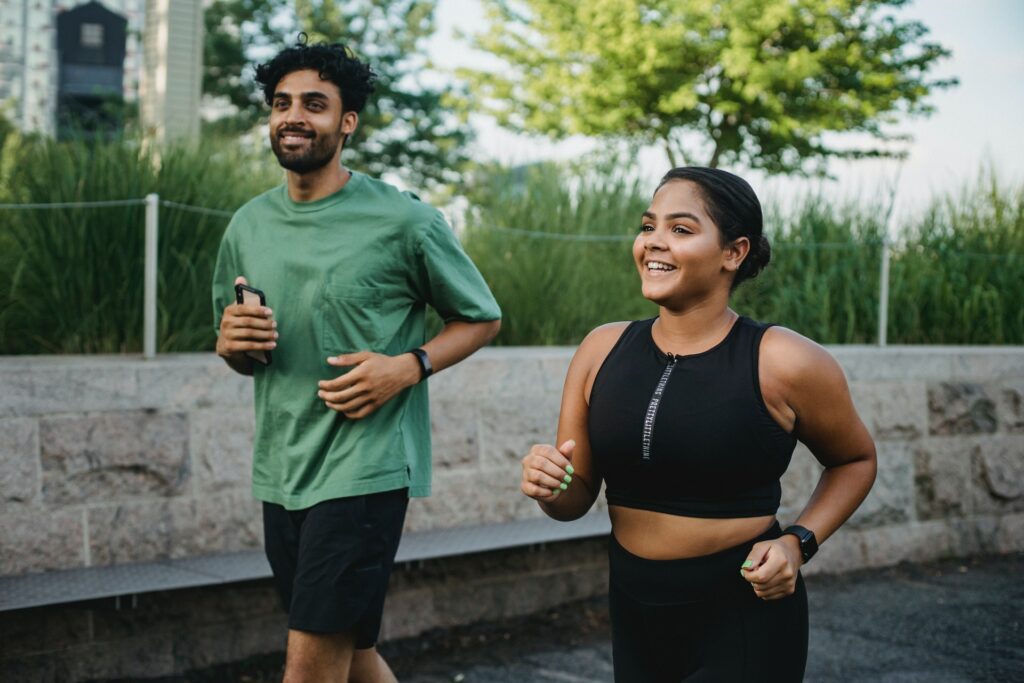
Why is Walking Amazing
When thinking of fat loss, our primary instinct is HIIT. But this vigorous cardio, although it heavily improves our heart health and aerobic capacity, it is taxing. It takes some time to recover from short interval sprints, while LISS is at a tempo we can actually recover.
Walking is amazing because it is a skill that most of us possess. A lot of times people start running with improper technique and poor strength (stability) leading to joint overuse and injuries. Well, great alternatives are rowing, elliptical, or cycling.
The Magic of NEAT
Walking is amazing due to something called NEAT. It is a non-exercise activity thermogenesis. The main reason why exercise helps with weight loss is its calorie-burning effect. NEAT does the same, but it is not considered an exercise.
Fun Fact
NEAT happens when you’re doing your basic activities like laundry, walking around the park, taking the stairs, or swinging a baseball. Not an exercise per say, but of heavy importance for weight management.
Provided we increase exercise load, doing too many HIIT sessions – we tax our system and increase the demand for calories. NEAT opposes this, as it’s a low-intensity activity that works the aerobic system.
Research shows NEAT is very impactful in terms of weight loss. It’s just about being more active, not necessarily “hard cardio” that can move the needle. It tips over the scale, efficiently increasing calorie expenditure, leading to practical weight loss. (3)
Can low-intensity steady-state cardio be effective for weight loss?
Yes, low-intensity steady-state cardio can help you lose weight, but the process may take longer than high-intensity routines. The secret is to sustain a calorie deficit with an appropriate diet and consistency in your workouts. Low-intensity cardio workouts like walking or light cycling are easier on your body and can be done more frequently than high-intensity exercises.
What is the best cardio exercise for weight loss?
The best one is the one you can adhere to the longest. That can mean low-intensity hiking, swimming, or even HIIT on the assault bike. Generally, increasing movement and activity is far more favorable for weight loss adherence and success than intense HIIT workouts.
How can I incorporate cardio exercise into my daily routine?
It can start off with something very simple. Bike to work. Park further away to take a lap in the park. Next time, ditch the elevator and take the stairs. As you progress, you’d look into hiking, swimming, or running. Dancing or playing VR games is also quite enjoyable one. Just pick what works for you, at the end of the day, it’s about stimulating the heart.
7 Benefits of Low Intensity Cardio Exercise
When it comes to the benefits of low-intensity cardio exercise, there’s a ton. From improving aerobic capacity to burning more fat and improving brain function we’ll cover it all. Grab a cup of coffee and enjoy!
Cardiovascular Health
The Greek word kardia means heart, hence where the exercise for the heart derives its name. The most obvious benefit is improving heart health.
As we exercise, the heart beats to pump out more blood to deliver fresh oxygen to the muscles. It does this by increasing heart rate and stroke volume which leads to an adaption in favor of a healthier heart.
Aerobic exercise reduces the mortality risk from coronary heart disease. Numerous studies show it can improve blood lipid levels, cholesterol profile, lower resting blood pressure, and inflammation. (4) (5) Just leisure physical activity can reduce coronary incidents by 10-30%, depending on sex. (6)
Cardio exercise also improves mitochondrial function. A topic we’ll touch on a bit later. It improves vascularity, creating more blood vessels. On top of that, cardio increases something called Nitric Oxide, which improves circulation by increasing the diameter of your blood vessels. (7) (8) (9) This means better circulation, faster oxygen delivery, and more energy creation.
This begs the question, is more exercise better? While you can easily overtrain on HIIT, with steady cardio, you can do a bit more. However, there’s a U-shaped curve that says around 1-2.4h or aerobic exercise for 2-3x weekly is optimal. Going much above and beyond seems to give the least benefit, or be detrimental. (10)
Conclusion
Steady-state cardio reduces cardiovascular mortality risk. It lowers resting blood pressure and inflammation. It improves blood lipid levels and cholesterol profile. It enhances blood circulation by increasing nitric oxide. This all translates to a more efficient cardiovascular function.

Aerobic Performance
Aerobic performance Is determined by many factors like VO2 max, running efficiency, lactate threshold, and local muscle endurance. It shows how good your cardiorespiratory function is, and how well the muscles are adapted to exercise.
Fun Fact
You won’t be surprised that most marathon runners use pyramidal and polarized training, which places the bulk of the training in the zone 2 (if we split activity in 5 zones, zone 1 if we split it into 3).
Steady-state training takes care of all the fundamentals like mitochondria, cellular metabolism, and oxygen transfer on a cellular level – it’s the foundation.
Research shows low-intensity exercise enhances recovery ability, (11) partially by reducing lactate accumulation and sparing more (phospho) creatine. (12)
Where low-intensity exercise excels is the energy production vehicle. Mitochondria are the energy power cells in our bodies, which use oxygen to produce ATP. Aerobic exercise seems to improve this function. (12) (7)
Aerobic exercise leads to heart adaptations resulting in higher cardiac output. It even enlarges the heart, improves contractility, and increases blood volume. (13) This increases aerobic power, increasing your endurance or stamina. (14)
Conclusion
Steady-state cardio teaches the body to work more efficiently, burn more fat and use oxygen better. It causes adaptation in both your heart, muscles, and blood in favor of better aerobic performance.
Weight Loss
Doing steady-state cardio like walking uses fats for fuel. Although it doesn’t mean burning your belly fat for fuel, it burns fat as a nutrient for fuel. This is beneficial because it makes you metabolically flexible, training the ability to switch from glucose to fat for energy.
High-intensity interval training burns more calories per minute, but it’s glycogen. Low-intensity steady-state training burns more fat. Take into consideration the fact that you can perform LISS for a longer duration, net calories burned are similar. Research failed to find a difference between HIIT and moderate continuous exercise. (15)
The most effective way to improve body composition is to increase your protein intake, do more steady-state cardio, and lift weights. Don’t let the time-effectiveness of HIIT fool you. Do HIIT for the heart, VO2max, and aerobic performance, not weight loss – it’s taxing.
Close to Zone 2 training, research on LISS, moderate continuous exercise or physical activity shows:
- moderate weight loss in people who engage in physical activity program (<2) (16)
- body weight decrease of 8% or 7.5 kg in obese people, decrease in abdominal and visceral fat (17)
- significant weight loss during 1h of steady-state training 2x weekly, with a customized dietary plan for caloric deficit (18)
- continuous exercise improved fat distribution and reduced trunk fat in overweight adults more than HIIT (19)
- low-intensity cycling at 50W was superior for burning, oxidizing, and utilizing more fat compared to higher intensities. (20)
Conclusion
Steady-state exercise is the best way to increase your calorie expenditure. A perfect intensity level at which you burn and utilize most fat. It’s more practical, less taxing, and shown to decrease abdominal and visceral fat effectively.
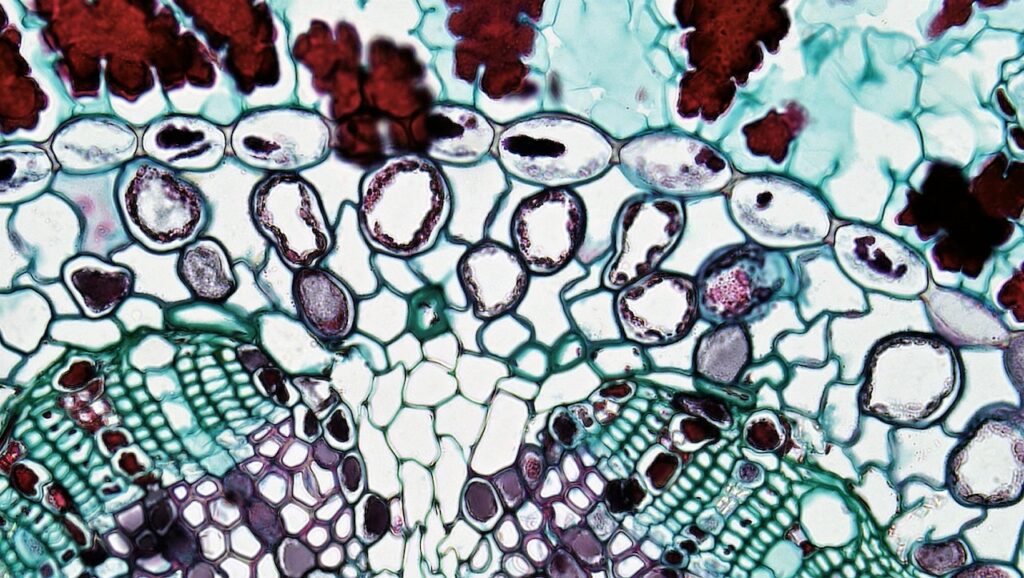
Mitochondria Function
If your main concern is longevity, you should look at mitochondria. The mitochondria are the power cells that produce energy within the body. Poor mitochondria function means metabolic deficits and inflammation, which drives disease. (21)
Functional mitochondria mean more energy and higher efficiency. This means you need less food to produce more energy, which is awesome for body composition. It means you use oxygen more efficiently, which is king for aerobic performance and longevity.
Studies show cardio or endurance exercise can improve mitochondrial function and aid in restoring vascularity. (22) It increases mitochondrial proteins, important for burning fat as fuel, to create energy. (21)
Exercise helps stimulate mitochondrial biogenesis, making more of these power cells. Plus, it regulates MQC or mitochondria quality control – helping synthesize new and kill old dysfunctional Mitochondria. (23)
Conclusion
Cardio improves mitochondrial function, quality, and synthesis. These play a major role in energy creation, fighting oxidative stress, and overall health and vitality. It’s endurance exercise that causes mitochondrial adaptations leading to better aerobic performance and longevity.
Cognitive Performance
As we exercise, blood flow in the brain increases. This is good for reducing plaque and fighting inflammation. But it can also stimulate something called BDNF, which is a brain-derived nootropic factor that improves the brain’s plasticity. (24) (25)
But there’s another powerful reason runners love running so much. It’s known as the runners’ high. It refers to the increase of endorphins in the prefrontal and limbic regions of the brain. Serotonin is one of the main endorphins increased, which signals relaxation and happiness. (26) (27)
Aerobic exercise impacts the HPA axis, increasing cortisol and stress. Funny enough, this causes an adaptation (or a response) to a state of relaxation.
Running at 70 to 80% of maximal heart rate can increase certain endocannabinoids, which have a mood-balancing and natural pain-killer effect. It increases anandamide, a compound known to alleviate depression, stress, and anxiety. (28)
Fun Fact
BCAA or branched-chain amino acids compete with tryptophan (5-HTP) for who’s better at crossing the blood-brain barrier. During exercise, we use most of these BCAAs, as they go into the muscle. This leaves tryptophan a free pass to the brain. Since it’s a serotonin precursor, it’s only logical Serotonin increases after exercise.
Cholesterol Profile
In the body, there is something called LDL, or low-density lipoproteins which are bad when elevated too high. This type of cholesterol oxidizes faster and isn’t as good at transporting fat. We want lower levels.
There is also HDL or high-density protein, which is “the good cholesterol”. It’s better at transporting fat and higher levels are correlated with a healthier heart.
Improvement in cholesterol profile means reducing triglycerides and LDL while increasing HDL. This is known to lead to a healthier heart, lower inflammation, and better metabolic health.
Resistance training and cardio can increase HDL levels. It’s estimated that the minimum amount of effective workload is around 900 calories per week expanded, which works out to 120 minutes of exercise. (29)
While high-intensity training is better for reducing LDL and increasing HDL, exercising at a moderate pace still improves blood pressure, lipid profile, and body composition. (30) (31)
Conclusion
Exercise improves cholesterol profile by increasing HDL and reducing LDL cholesterol. This leads to less inflammation, better cardiovascular function, and a healthier heart.
Insulin Sensitivity
When we eat carbohydrates our blood glucose levels increase. Insulin transports glucose, but poor insulin function leads to insulin resistance, not properly recognizing and transporting glucose. The result is diabetes, inflammation, and weight gain.
That’s why it’s so important to improve the machinery around glucose, so we reduce these glucose spikes. This leads to weight loss and better metabolic health in and of itself.
Fun Fact
The reason increasing muscle mass helps you sustain lower bodyfat % partially lies in insulin. It’s more effective at using glucose to fuel the muscle, enhancing GLUT4 function (G transported) which leads to better heart and metabolic health. Plus, more muscles means faster metabolism – aka burning more calories. (32)
In 1.372 participants from 27 RCTs, a meta-analysis shows aerobic exercises can reduce blood sugar levels, HbA1c levels, and improve fitness in people with T2 diabetes. It’s worth noting that although LISS helps, HIIT is more effective in improving the interplay of insulin and glucose. (33)
Numerous studies show consistent results of LISS or Physical activity:
- exercise improves the disposal of glucose, being able to push more G into the working muscle, superior to just diet (34)
- physical activity improve BG control in T2D, contributes to weight loss, and improves insulin sensitivity (35)
- aside from glucose control, exercise improves lipid profile, blood pressure, and cardiovascular health. The combination of weight loss and activity lowered T2D risk by a whopping 58%. (32)
Conclusion
Exercise improves insulin sensitivity in more ways. First, it improves GLUT4 functions (glucose transport) and adds muscle mass which takes in more glucose. Second, aerobic exercise reduces blood sugar levels, HbA1c, and improves glucose control.
How to Move More | 9 Practical Tips
Most of the benefits associated with zone 2 training or steady-state cardio are similar to a non-exercise activity. We’re talking leisure physical activity like mowing the lawn, playing ping-pong, or cleaning. This is important because moving more is the fundamental step to being healthier, not doing extreme-intensity workouts.
Here are some useful tips on how to be more active. The aim is practical weight loss, better cardiovascular health, vitality, and longevity.
- take the stairs and avoid the elevator
- take a walk outside, it is beneficial on so many levels
- schedule active rests at work, stand up every 2 hours, and move a bit for 5-10min
- use a walking station or standing desk if you’re an office worker
- get a dog, you’ll kind of have to move more
- cycle to work instead of driving a car
- position cardio equipment at home – stationary bike, rower, or a ski-erg
- take a hike with your partner to start the weekends
- enjoy a virtual reality game session – play some invisible tennis
Learning to move more instead of scheduling a grueling workout 2x weekly is a far more practical approach to a healthier body. Walking gets you pretty far. Stretch a bit, do some mobility work, take a hike, and play some ping-pong. Remember, it’s not a calorie-counting workout, it’s just playing. It’s the NEAT that really makes you lose weight practically, not the hardest 4-minute HIIT session.
Conclusion
- Low-intensity exercise or steady-state cardio is a light activity at Zone 2 Intensity. It falls somewhere between 60-75% of HRmax, so things like jogging, fast walking, hiking, or slow swimming will do.
- LISS type of cardio is the fundamental step to building endurance. It improves mitochondria function and quality, leading to better aerobic performance and higher energy production.
- Walking and steady-state cardio are done at the most effective fat-burning intensity, working the aerobic system. It’s not taxing, but rather a recovering workout.
- Increasing NEAT or non-exercise activity thermogenesis leads to great weight loss. It increases calorie burning without affecting hunger much, it’s practical and easy to sustain. Take the stairs, get up and do some mobility, go take a hike, and shoot some hoops.
- Low intensity works great for the heart, reducing CVD risk, improving circulation, cholesterol profile, vascularity, and blood pressure. It’s also great for controlling sugar, as it improves insulin sensitivity.
- LISS also improves brain performance and neuroplasticity. It positively affects mood, increasing endorphins like serotonin.

